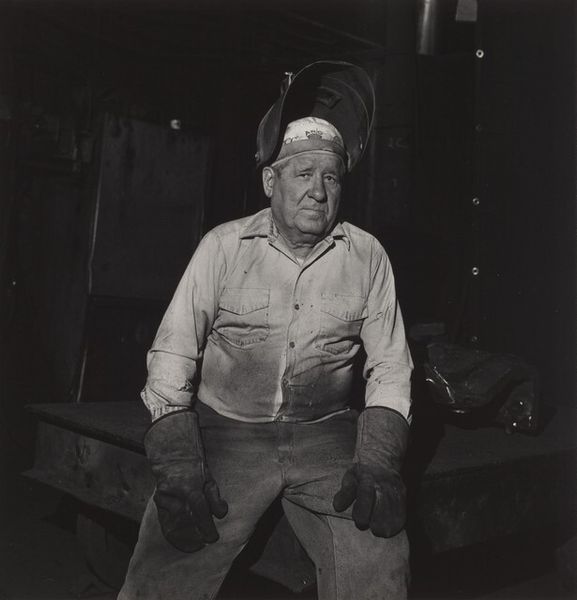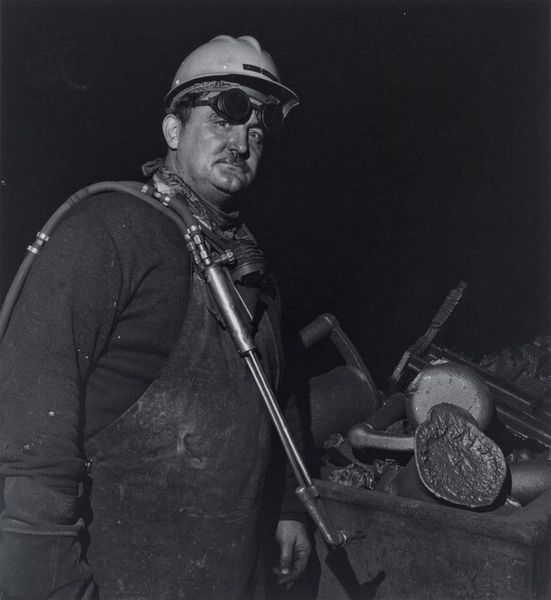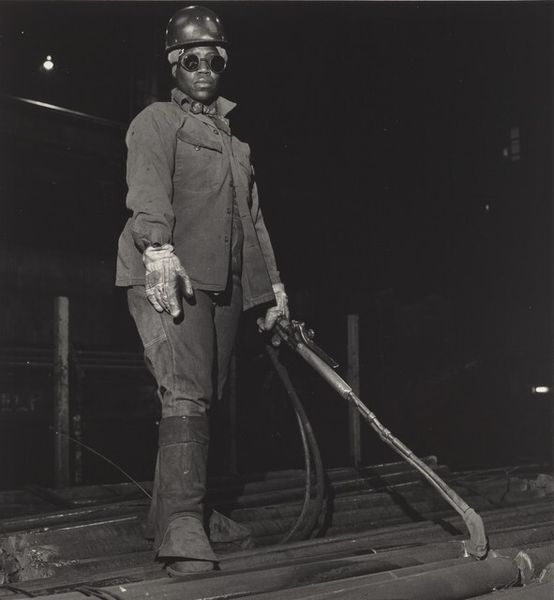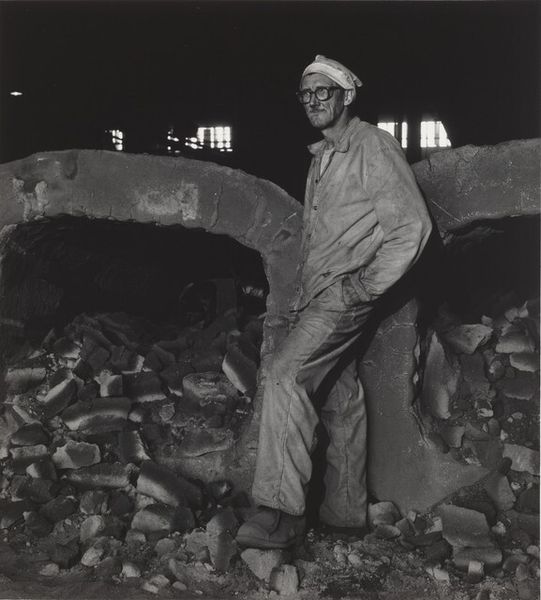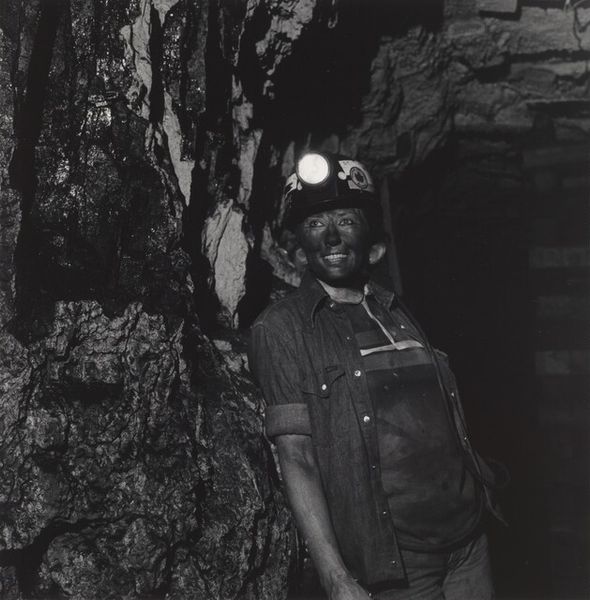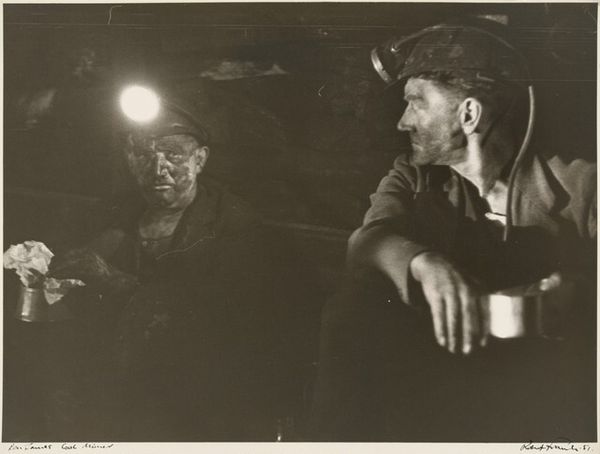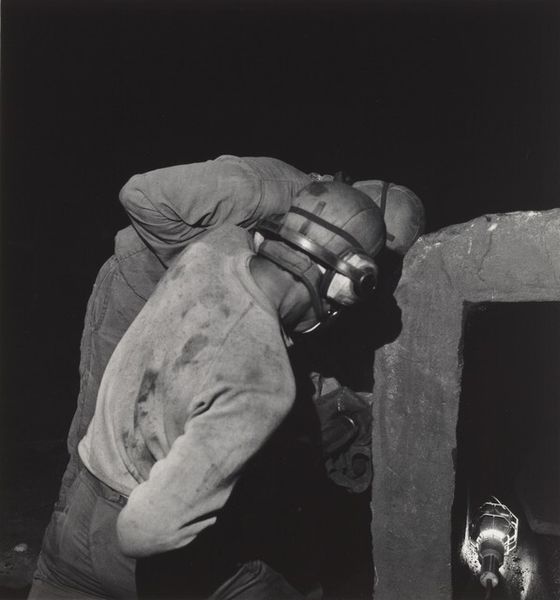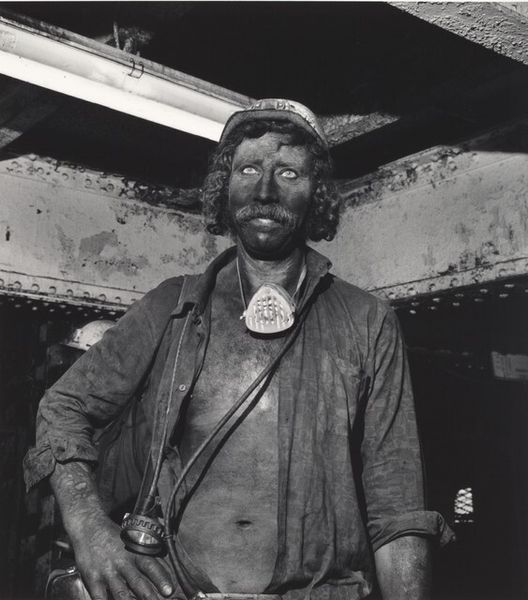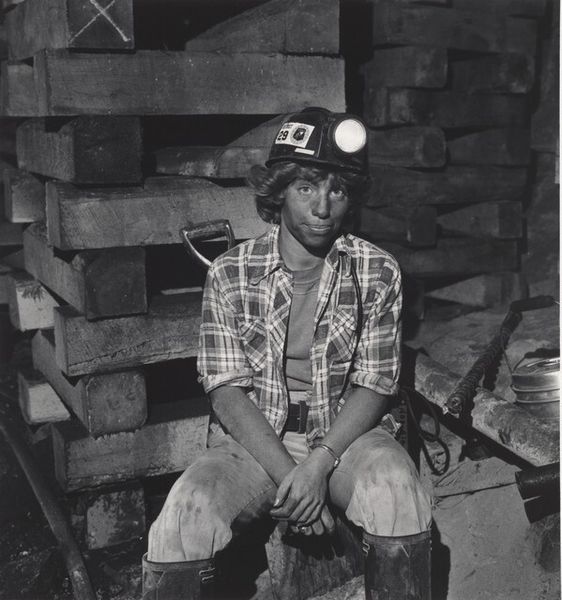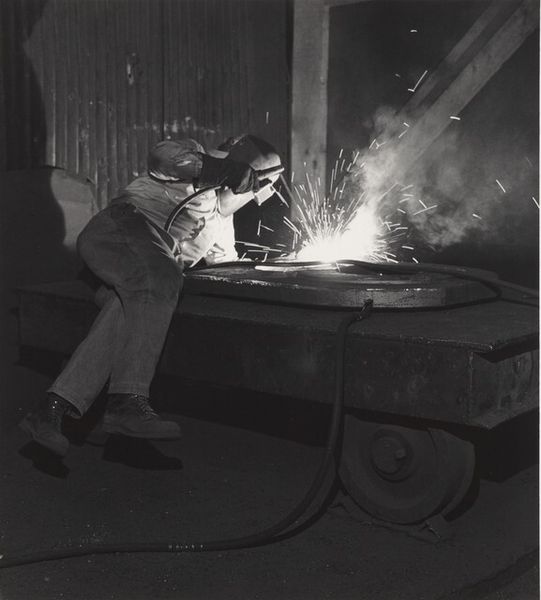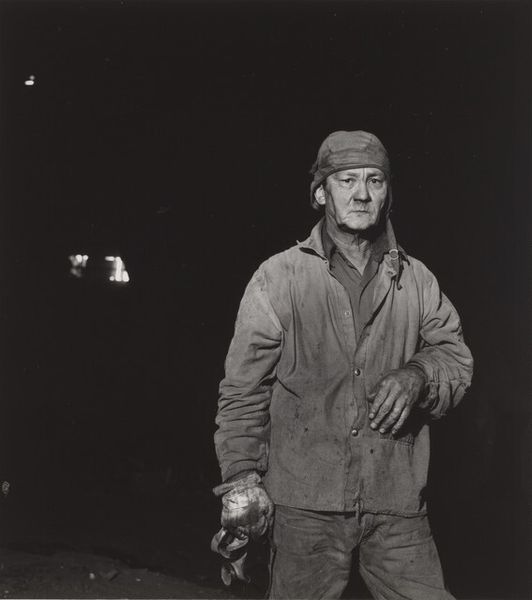
Dick Hughes, Shenango Ingot Molds (Working People series) 1978 - 1981
0:00
0:00
photography, gelatin-silver-print
#
portrait
#
black and white photography
#
social-realism
#
photography
#
gelatin-silver-print
#
monochrome photography
#
genre-painting
#
realism
Dimensions: image: 18.2 x 18.2 cm (7 3/16 x 7 3/16 in.) sheet: 25.3 x 20.3 cm (9 15/16 x 8 in.)
Copyright: National Gallery of Art: CC0 1.0
Curator: The image before us is a gelatin-silver print from Milton Rogovin’s “Working People” series, titled “Dick Hughes, Shenango Ingot Molds,” dating from 1978 to 1981. My first impression is one of stoicism against what seems like a monumental dark and austere industrial background. Editor: I’m struck by how Rogovin balances light and shadow in this composition. Notice the strong diagonal of the mold running from the lower right corner, meeting the soft glow illuminating Dick Hughes’s face. The textural details of his worn clothes and the industrial grime create a study of contrasts. Curator: Rogovin’s work always serves as a commentary on the dignity of labor. He sought to document working-class individuals and communities often ignored or misrepresented. This image is one of many Rogovin made across America to show solidarity with marginalized communities. Editor: It’s formally interesting how the circular elements—the goggles atop Hughes’s head, the safety visor he holds, the mold itself—echo each other. Do these recurring shapes give the portrait visual harmony, or perhaps underscore the cyclical, repetitive nature of the subject’s work life? Curator: I think it humanizes these immense structures, and offers dignity by using similar composition techniques from traditional portraiture, therefore elevating working-class lives and recognizing the value of their lives in modern society. He’s not only showing the human condition but also the external social forces affecting them. Editor: Seeing the steam faintly curling up around the metal, and noting the sweat and grim on the man's face, does make me imagine that the labor portrayed is very harsh. Do you agree that this contributes to our understanding of Rogovin’s view about working conditions at that time? Curator: Absolutely. Rogovin’s photo offers visual testimony of these conditions while serving as a lasting tribute. Rogovin saw beyond stereotypes of blue-collar workers; that's what remains. Editor: So, considering all that, this work seems to find a unique position as an aesthetically compelling photograph as well as a potent historical document.
Comments
No comments
Be the first to comment and join the conversation on the ultimate creative platform.
